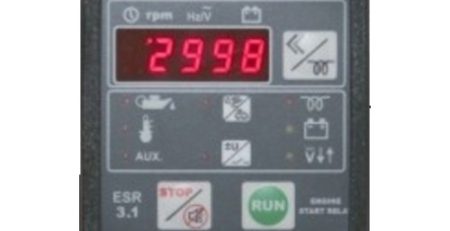Solar Panels Provide a Green Energy Solution Using High Tech Computer Manufacturing Processes
Solar cell technology has been in existence for over 60 years. Solar modules, commonly referred to as photovoltaic panels, have been used to generate electricity from light ever since the silicon based semiconductor was invented. No longer a laboratory curiosity, solar cells are an industry unto themselves and are as common in energy generation as conventional power generation methods such as steam turbine driven generators and nuclear power plants. There are many solar energy collection methods in use and available today. We will investigate the more common electricity producing solar energy devices: photovoltaic cells and PV modules.
How does a PV module generate electricity from light?
Solar Cell
Solar cells are made of materials that are electrically activated when light strikes their surfaces. This unit, a solar cell, operates without moving parts and never wears out! Add many cells together and you have a solar array or a photovoltaic module. The more cells, the higher the power that is possible to generate from the modules.
Cell Layers
The top layer of the solar cell or wafer contains a silicon layer which has free electrons which are negatively charged particles. A boron enhanced bottom layer contains spaces or holes, that let electrons move into the open spaces. The manufacturing process creates this electron imbalance between the two layers within this semiconductor material. This imbalances is responsible for the operation of the solar cell which creates the electrical current and voltage.
The Sun Strikes the Solar Cell
Photons from the sun hit the outside of the photovoltaic cell. This activity excites the free electrons in both silicon layers. Some electrons in the bottom layer travel to the silicon layer at the top of the cell. Electron flow moves through metal contacts located on the solar cell’s front and back which creates electricity. Electrons flow in a closed loop or electrical circuit. Combining multiple solar cells has an additive effect on voltage and current depending on how they are “strung” together. Think of each cell as a battery. Stringing the cells in series (negative to positive) will add voltage and keep amperage the same as for one cell. Stringing the cells in parallel will keep voltage the same as for one cell but add the amperage of the cells.
Powering With Solar
Solar panels generate electrical current which is transmitted to an inverter. The inverter changes direct current into alternating current which matches the electricity that your power company provides. Appliances and power equipment operate with AC current. In the United States, power is generated at 60 hertz whereas in Europe, 50 hertz is the norm.
The solar electrical power feeds into the wiring of a house, business or power plant and into the electrical utility’s power grid. An independently operated power system also can act as its own utility. This “off-grid” system requires batteries to store power when the solar panels produce more power than the load needs and is discharged when the solar modules cannot capture enough energy from the sun to offset the electrical loads from the home or business.
Converting Silicon Wafers Into Photovoltaic Cells
The computer chip industry has made the low cost production of the solar cell possible. The strides in yield, processing and quality have made the photovoltaic cell manufacturing process current state-of-the-art and scalable. While the process is matures for silicon wafer production, the techniques are time consuming and important in achieving the desired performance outcomes. The silicon wafer starts out as an ingot of silicone material and then is sawn into the characteristically round wafers that you see on a solar module.
EtchingA Wafer
The part of the solar cell process requiring a clean room incorporates chemical and heat treatments that convert the greyish silicon wafers into live, blue colored cells. A chemical etch removes a tiny layer of silicon. Underneath this layer, a crystal structure reveals a pyramid shaped surface that absorbs more light.
Diffusing
Silicon wafers are placed into ovens where phosphorus is diffused into the wafer surface. This step deposits a molecular sized deposit as the wafer surface is exposed to phosphorus gas at a high heat. This step gives the surface a negative potential electrical charge. This layer and the boron-doped layer beneath the surface create a positive-negative, or P/N, junction which is the basis of a PV cell. This is also how a semiconductor chip is made.
Coloring And Printing
The cells are placed into vacuum chambers where silicon nitride is deposited onto the side of the wafer that will be exposed to the sunlight. The coating with silicon nitride is designed to reduce light reflection. This process gives the cell its dark blue color. The cell is ready to produce electricity but still need a means to collect and forward the power to the load. Metal stripes are printed on both sides of the cell so that electrical charge collection and landing areas for wires can be added to the wafer. When this step is complete, the cell is ready to produce power.
Attaching Cells Into Solar Panels
Cells are arranged to create the voltage and amperage profile of the completed solar panel. If you look at the various brands of solar panels on the market, you will notice that the cell arrangement dictates both of these attributes of home solar panels and commercial type solar panels. Consequently, the physical frame size of the PV module is set by the solar cell arrangement.
Soldering
Cells are soldered together into series strings which involves electrical bonding of the wafers together to form one module. Several strings are connected to form a rectangular matrix of cells. Each cell matrix is laminated onto glass using a robust adhesive system that ensures the completed panel will survive normal environmental loads.
Framing
The outer frame of the solar module provides protection against weather and impact loads and also includes the electrical connection which could be a junction box or a standard electrical cable connector. These are commonly used in other electrical devices.
Location, Location, Location
Siting the solar module array requires the chance to collect as much sunlight as possible during the seasonal variation in sun intensity.
Rooftop systems provide a ready platform since the surface is often tilted toward the sun and the surface is unusable for most any other device.
Ground-mounted systems are good options where roofs are unavailable or too small in area. Modules are mounted on racks which are ground anchored and accessible for service or adding additional solar modules.
Canopy systems work well in shed roof applications such as parking areas.
Utility-scale systems are normally large scale power creating units that are sized for utility grade use and not usually limited in land area.
Tracking systems optimize output power by moving the solar modules according to the sun’s path.
Summary
Solar modules are a union of solar cells and the technology that makes computer chips lower cost than just a decade ago. The inherent reliability of the solar modules used for home solar panels is due to the lack of moving parts and the high reliability parts and processes that make the solar module reality. There are virtually no limits to the types of solar electric systems that can be designed and very few limitations on location as long as there is abundant sunlight.
BY by GAHZLY
#Solar #Panels #Provide #Green #Energy #Solution #High #Tech #Computer #Manufacturing #Processes











Leave a Reply
You must be logged in to post a comment.